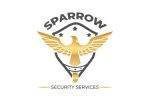About/Corporate Security Services
Corporate Security Services
Corporate Security Services are measures and protocols designed to protect a company’s employees, assets, information, and reputation from threats such as theft, espionage, fraud, and physical or cyber-attacks. These services are essential in ensuring a safe environment, maintaining operational continuity, and mitigating risks that could impact a corporation’s overall performance and stability. Corporate security encompasses both physical and digital protection, often tailored to meet the specific needs and risks of the organization.
Key Components of Corporate Security Services
Physical Security
- Access Control: Managing entry to facilities using systems such as keycards, biometric access, and security checkpoints to ensure only authorized personnel enter.
- On-Site Security Guards: Trained personnel who monitor facilities, enforce security policies, and respond to incidents.
- Surveillance Systems: CCTV cameras and monitoring systems to deter unauthorized activities and provide evidence in case of security breaches.
- Perimeter Security: Physical barriers, fencing, and lighting to protect the boundaries of corporate facilities.
Cybersecurity
- Data Protection and Privacy: Measures to safeguard sensitive company and customer information, including encryption and secure storage practices.
- Network Security: Firewalls, intrusion detection systems, and other protections to secure corporate networks from cyber threats.
- Incident Response: Protocols and teams in place to quickly identify, assess, and respond to cyber incidents, limiting potential damage.
- Cybersecurity Awareness Training: Educating employees on safe digital practices to prevent phishing, malware, and data breaches.
Internal Investigations
- Employee Misconduct Investigations: Looking into allegations of fraud, harassment, theft, or violations of company policies.
- Compliance Monitoring: Ensuring adherence to internal policies and regulatory standards, including anti-corruption and data protection laws.
- Fraud Detection: Identifying signs of fraudulent activities, such as financial discrepancies or manipulation of records.
Risk Assessment and Management
- Threat Analysis: Identifying potential threats specific to the corporation’s industry, location, and operational structure.
- Vulnerability Assessment: Evaluating facilities, systems, and processes to find weaknesses that could be exploited.
- Risk Mitigation Planning: Developing strategies to minimize or eliminate identified risks, such as enhancing security protocols or updating policies.
Intellectual Property (IP) Protection
- IP Monitoring: Surveillance to detect unauthorized use of trademarks, patents, copyrights, and other proprietary information.
- Trade Secret Security: Safeguarding sensitive business information through secure storage, restricted access, and confidentiality agreements.
- Brand Protection: Monitoring for counterfeit products, online fraud, or unauthorized use of the company’s brand identity.
Crisis Management and Emergency Preparedness
- Crisis Management Planning: Preparing response plans for natural disasters, violent incidents, or cyber attacks to ensure rapid and organized action.
- Business Continuity Planning: Developing strategies to maintain essential operations during disruptions, minimizing impact on business functions.
- Evacuation Procedures: Ensuring safe and orderly evacuation in emergencies, including fire drills, emergency exits, and alarm systems.
- Communications Strategy: Establishing clear protocols for internal and external communication during crises to maintain transparency and trust.
Executive Protection
- Personal Protection: Security details for high-profile executives to prevent threats such as harassment, kidnapping, or assault.
- Travel Security: Planning and securing safe travel routes, especially when executives are visiting high-risk areas.
- Residential Security: Securing the homes of executives, often through guards, alarms, and surveillance.
Supply Chain Security
- Cargo Security: Measures to protect goods during transport, reducing the risk of theft, tampering, or damage.
- Supplier Vetting: Ensuring that suppliers meet corporate security standards, reducing risks from third-party partners.
- Inventory Control: Monitoring inventory to detect and prevent losses, theft, or unauthorized handling.
Workplace Violence Prevention
- Threat Assessment Teams: Professionals trained to identify and manage potential violence risks in the workplace.
- Employee Assistance Programs (EAPs): Offering support for employees dealing with stress, conflict, or personal issues that could impact workplace safety.
- Conflict Resolution and Training: Educating employees and managers on de-escalating conflicts and recognizing warning signs.
Compliance and Regulatory Adherence
- Policy Development and Enforcement: Ensuring that security policies are well-defined, understood, and enforced consistently.
- Industry-Specific Compliance: Meeting regulations such as GDPR for data protection, OSHA for workplace safety, or Sarbanes-Oxley for financial integrity.
- Audit and Reporting: Regular audits to verify compliance with corporate security standards, providing transparency and accountability.
Benefits of Corporate Security Services
- Enhanced Safety and Asset Protection: Protects employees, physical assets, and intellectual property, reducing potential losses and liabilities.
- Reduced Operational Disruption: Ensures smooth business operations by mitigating risks that could cause downtime or damage to infrastructure.
- Improved Employee Confidence: A secure environment promotes trust and morale among employees, contributing to productivity and satisfaction.
- Regulatory Compliance: Helps corporations meet legal and regulatory requirements, reducing the risk of fines and reputational harm.
A proud member of the Virginia Diverse Chamber of Commerce

